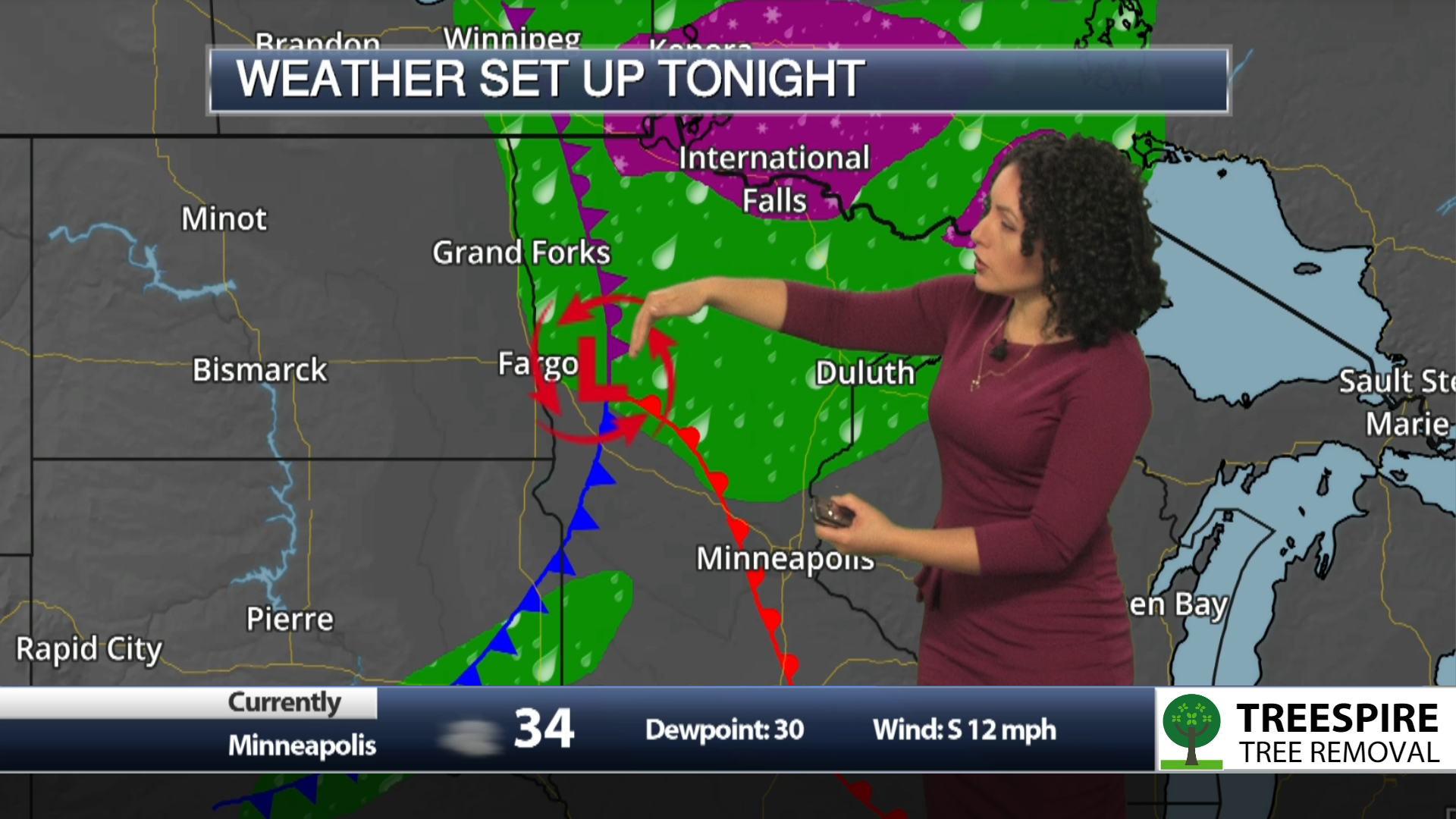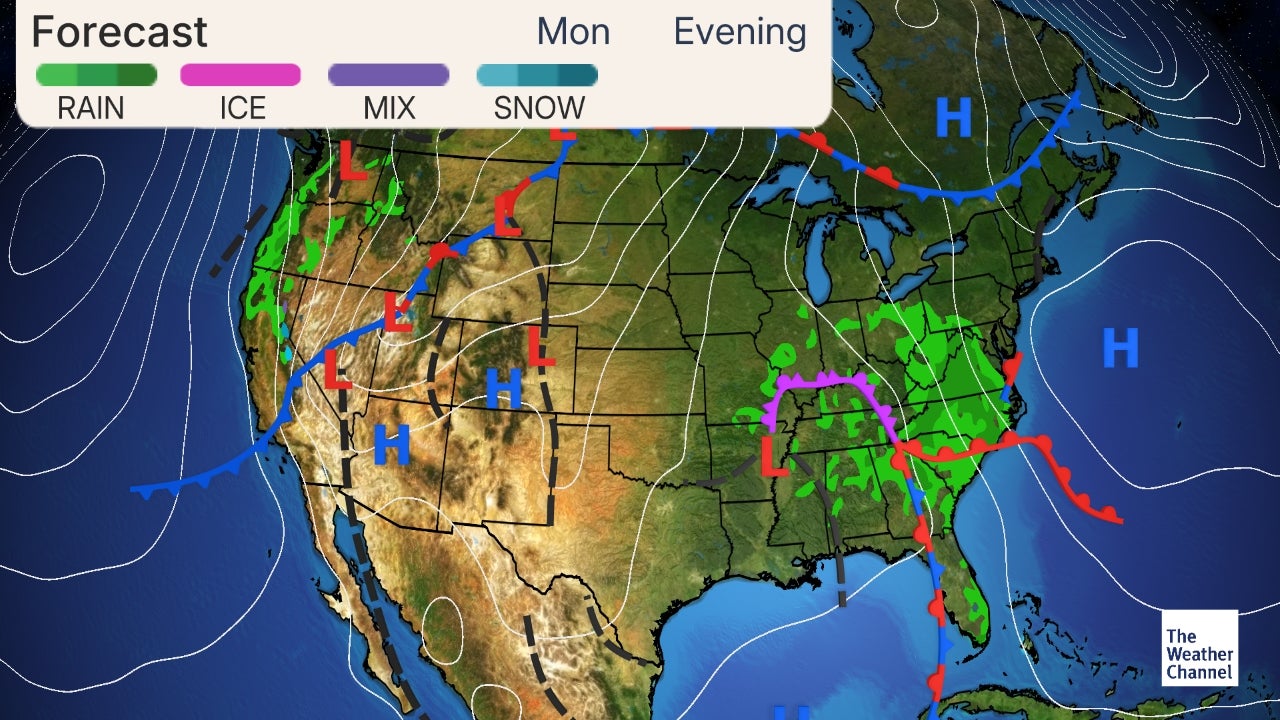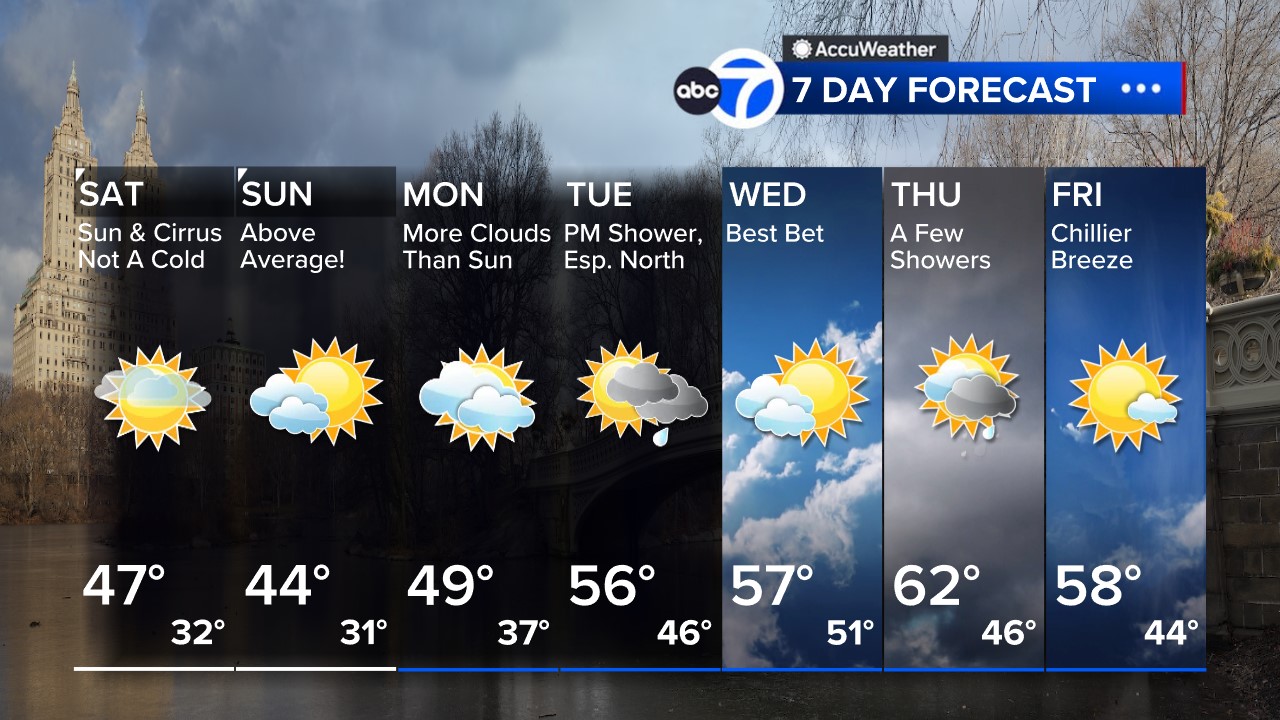Streaming mediaFuboTVLive StreamFrndly TVThe Weather Channel is an American pay television channel owned by Weather Group, LLC, a subsidiary of Allen Media Group. The channel's headquarters are in Atlanta, Georgia. Launched on May 2, 1982, the channel broadcasts weather forecasts and weather-related news and analysis, along with documentaries and entertainment programming related to weather.
A sister network, Weatherscan, is a digital cable and satellite service that offers 24-hour automated local forecasts and radar imagery. The Weather Channel also produces outsourced weathercasts, notably for RFD-TV. WeatherStar units also allow cable providers to scroll text messages when in use, including the capability to broadcast severe weather advisories and warnings in effect for the jurisdiction in which the WeatherStar system's cable headend is located and its immediate surrounding area.
Since its inception, the Weather Channel has broadcast segments providing local weather observations and forecasts generated by WeatherStar systems ("STAR" being an acronym for Satellite Transponder Addressable Receiver), proprietary computer units that are installed at the headends of individual cable providers. The Weather Channel uses special proprietary equipment that inserts information on current and future local weather conditions, and weather alerts issued by the National Weather Service, the Storm Prediction Center, and National Hurricane Center, if it is viewed on a cable television provider. The original WeatherStar technology has been upgraded on larger cable systems to the IntelliStar, which incorporates "Vocal Local" to announce current conditions, weather bulletins and detailed local forecasts. In the fall of 2012, the Weather Channel began to assign names to major winter storm systems. The channel's management stated the decision to start naming notable winter storms came as a way to more easily spread knowledge and raise awareness. By naming winter storms, TWC stated that the public would find it easier to follow storm information, social media will be able to refer to and discuss the storm, and people will have an easier time referring to the storm after it occurs.
However, critics of the Weather Channel insist it is a way to further hype winter weather, especially on the heavily populated East Coast. Critics contend that , many other areas of the United States actually experience much more frequent and intense winter weather than the East Coast, but does not have as large of a media market. Verizon FiOS dropped the Weather Channel and its sister network Weatherscan from its lineup on March 10, 2015, after the two parties were unable to come to terms on a new carriage agreement. The services have respectively been replaced by the AccuWeather Network and a widget provided by FiOS featuring forecast content provided by WeatherBug. No public announcement was made regarding the removal until over 12 hours after TWC and Weatherscan were pulled. The Weather Channel offered a less expensive deal to Verizon FiOS, which rejected the offer.
Verizon cited the Weather Channel's frequent use of scare tactics, naming of winter storms and the wide availability of the internet and mobile apps for consumers to access weather content any time of day as the reason for dropping TWC and its services. It is unknown if Frontier FiOS customers in clusters formerly served by Verizon are affected, including the recently acquired clusters from California, Texas, and Florida. TWC also maintains content partnerships with a number of local U.S. radio stations to provide local forecasts, using announcers separate from the meteorologists seen on the television channel.
For some affiliates, the Weather Channel provides a limited amount of live coverage during local severe weather events (with the Georgia-based announcers connected via ISDN). Distribution of TWC radio content is currently handled by Westwood One. ServiceDescriptionThe Weather Channel HDThe Weather Channel launched a high definition simulcast feed – which broadcasts in the 1080i resolution format – on September 26, 2007, initially available on DirecTV. TWC began broadcasting studio programming in high definition on June 2, 2008, with the introduction of a new studio that features various environmentally friendly technologies. The Weather Channel also broadcast original weather-related documentary/entertainment series and specials. These programs ran throughout the rest of the schedule.
TWC normally utilizes a different music theme for these events, dubbed "Storm Alert Mode", used for both WCL and LOT8's. While the films shown within the "Flick and a Forecast" block were weather-related in some form, some films featured had only a minimal tie to weather. The "Flick and a Forecast" presentations were then replaced by an additional hour of Weather Center and a two-hour block of long-form original programs.
The network also announced it would no longer greenlight original long-form programming, and expanded live forecast programming on its schedule throughout 2016 after all remaining long-form programs already in development concluded their runs. Sign up to receive email alerts when severe weather happens in your area. You can also view current severe weather warnings & watches for West Palm Beach on the WPBF alerts page. Get the latest weather conditions, sign up for location-specific weather alerts & view our Interactive Radar at any time with the WPBF app for iPhone and Android.
References to the names are generally limited on TWC-provided forecasts seen on NBC's news programs. The first winter storm to be named by TWC was a nor'easter that hit the East Coast of the United States in November 2012, which was named after the Greek goddess Athena. During the 2012–13 season, the Weather Channel named 27 winter storms .
During the 2013–14 season, the Weather Channel named 26 winter storms . Multiple factors are taken into consideration when deciding whether to name a winter storm. This includes, but is not limited to, predicted snowfall and other precipitation, wind speeds, and the timing of the storm. Version of the Weather Channel operated from September 1, 1996 to January 30, 1998, when it was shut down due to low viewership. It shared channel space with Sky Movies Gold/Sky Box Office 2, The Racing Channel and Galavision, airing for five hours a day.
It was designed for cable as it had local weather information for specific regions; in some areas, it was carried on cable providers 24 hours a day. Partly to mostly cloudy skies with scattered thunderstorms in the morning. High 87F. Winds E at 10 to 15 mph. Partly cloudy in the morning followed by scattered thunderstorms in the afternoon. High 86F. Winds S at 10 to 15 mph.
The Weather Network – A Canadian Category A cable and satellite channel devoted to weather forecasts. The channel's original format was similar to that of a news and information cable network. The Weather Channel operates a service based on modified versions of the IntelliStar technology called Weatherscan, a separate non-network TV channel which constantly displays local and regional conditions and forecasts, and on some cable systems, advertisements. Widely scattered showers or a thunderstorm early. High 86F. Winds ENE at 10 to 15 mph. Partly to mostly cloudy with widely scattered showers or thunderstorms possible later at night.
Low 78F. Winds ENE at 5 to 10 mph. Partly to mostly cloudy skies with scattered thunderstorms before midnight. Low 78F. Winds light and variable. Partial cloudiness early, with scattered showers and thunderstorms in the afternoon. High 87F. Winds SSE at 5 to 10 mph.
Partly cloudy skies will become cloudy with scattered showers this afternoon, evening. Look for these to start around noon near and along I-95 then moving inland through the evening. Rain from the remnants of Nicholas will move in late tonight, Thursday. Base Reflectivity Doppler Radar loop for Homestead FL, providing current animated map of storm severity from precipitation levels.
View other Homestead FL radar models including Long Range, Composite, Storm Motion, Base Velocity, 1 Hour Total, and Storm Total; with the option of viewing static radar images in dBZ and Vcp measurements, for surrounding areas of Homestead and overall Miami-Dade county, Florida. On April 8, 2014, the Weather Channel and DirecTV both settled on a new agreement , with the provider restoring the channel on channel 362 the following day. Access to local weather content using the red button feature did not return until May 2, 2014. On May 24, 2010, the Weather Channel announced that it had reached a new multi-year carriage agreement with Dish Network, the financial terms of which were not disclosed.
Despite the earlier announcement that the Weather Channel would be dropped, the channel was never officially removed from Dish Network. The Weather Cast ceased operations in anticipation of the launch of a Weatherscan-based service announced as part of the agreement that would provide local weather information for Dish Network customers. The proposed movie scheduled for the Friday after the deal was struck , Gorillas in the Mist, was dropped in favor of a six-hour marathon of Tornado Road.
The Weather Channel provides forecasts for satellite radio provider Sirius XM Radio in the United States. Both services run regional forecasts on a single station, and operate several individual stations providing combined local weather and traffic information for major metropolitan areas. In November 2013, the channel introduced a new initiative of "weather all the time" in response to the criticism. All original programming – which was rebranded under the tagline Natural Drama – now had direct relevance to weather-related subjects, and the network emphasized its promise to interrupt original programming either regionally or nationally during major weather events. In addition, the Weather Channel extended the display of its lower display line to commercial breaks and through entire broadcasts of its original programs. Variable clouds with scattered showers and thunderstorms, mainly overnight.
Low 77F. Winds light and variable. WeatherStar – A series of proprietary computer units installed at the head end of cable television providers that disseminate weather data. DirecTV removed the Weather Channel from its lineup on January 14, 2014, after the two parties were unable to come to terms on a new carriage agreement; as a result, DirecTV became the first major pay television provider to drop the channel in its history. It also provided WAP access for mobile phone users, desktop widgets for quick reference by computer users, and customized weather feeds for individual websites. Cell phone customers could also receive local forecasts from TWC sent to their mobile handsets via SMS by sending a text message with their ZIP code to (which spells "4cast").
The Weather Channel also provided weather forecasts for other online services including Yahoo!. Similarly, the Weather Channel also provides weather reports for a number of newspapers around the United States. This included a half-page national forecast for USA Today, for which TWC provided content until September 2012, when rival AccuWeather replaced the Weather Channel as the paper's forecast provider with TWC's forecasts being replaced with AccuWeather's on the USAToday.com website one month later. For both cable and satellite viewers, popular music plays in the background during these segments.
Some older WeatherStar units were still in use by small cable companies that could not afford to upgrade to the IntelliStar. The WeatherStar units are also able to overlay text-based local contact information over the national feed during certain business advertisements aired on the channel. Click on the Layers menu in the bottom right of the radar to select radar options like Current Conditions, Storm Tracks and Feels Like Temps. Also get information on current severe weather watches and warnings in your area.
Zoom in to your street or out to your region and view past and futurecast radar. Mixed clouds and sun with scattered thunderstorms. Isolated thunderstorms during the evening, then skies turning partly cloudy overnight.
Low 77F. Winds ENE at 5 to 10 mph. Variable clouds with scattered thunderstorms. High 86F. Winds E at 10 to 15 mph. Partly cloudy with afternoon showers or thunderstorms. High 88F. Winds E at 5 to 10 mph. In July 2012, the Weather Company purchased competing weather website Weather Underground.
While the Weather Channel already had success with its own mobile apps, it planned to use Weather Underground's large network of digital forecasting and tracking websites to bolster its digital growth. Weather Underground operates separately from the Weather Channel and continues to provide its own forecasts, though its website incorporates some weather news and video content from TWC. In the early morning hours of April 18, 2019, the Weather Channel was temporarily unable to air live programming due to what they called a "malicious software attack" on their network. Previously taped shows were aired while engineers worked with backup equipment, and live programming returned to normal within a few hours .
As of May 2019, the investigation into the malware attack was still active. NBC Universal also owned NBC Weather Plus, a rival service which was carried by and featured content from the NBC television network's local network affiliates; that service announced its discontinuation three months later. Over-the-air digital subchannels carrying Weather Plus have since switched to the similarly formatted The Local AccuWeather Channel, kept the Weather Plus engine, or switched affiliations to other networks such as This TV or the Retro Television Network; some have shut down entirely. An ESE breeze will help temperatures reach the low 90s. Keep the rain gear handy the sea breeze will develop and this will spark some scattered storms. The storms should stay inland so if you want to head to the beach go enjoy.
There are no advisories for beach goers and boaters. Partly cloudy with a slight chance of thunderstorms. Low 76F. Winds NE at 5 to 10 mph. Partly cloudy with isolated thunderstorms possible. Scattered showers and thunderstorms. Partly to mostly cloudy with a chance of thunderstorms.
Scattered thunderstorms during the evening. Partly cloudy skies after midnight. Low 76F. Winds light and variable. Mixed clouds and sun this morning.
Scattered thunderstorms developing this afternoon. High 86F. Winds SE at 5 to 10 mph. When NBCUniversal acquired the network in 2008, the network has participated in the "Green is Universal" campaign, which occurs twice a year, usually during April and November. The network's logo changes to a shade of green as part of the campaign promoting environmental conservation.
Since 2014, the network has utilized a red-colored version of the logo during hurricane coverage; the red logo has also appeared during severe tornado outbreaks. The Weather Channel's first and most recognized logo was a blue rectangular box with rounded edges that debuted with the Weather Channel's first broadcast on May 2, 1982. This logo was revised in 1996, with the corners becoming less rounded and the logo becoming slightly flat. The weather.com URL text was permanently added underneath the logo in 1999. On August 15, 2005, the logo was overhauled again; the logo became a straight-edged square with no white trim on the edge and "The Weather Channel" text became oriented in title-case and left-justified, similar to its Canadian sister channel the Weather Network. A 25th-anniversary logo used in 2007 featured a white square edged in blue connected to the current logo with the text "25 YEARS" inside it in blue.
TWC provided numerous customized forecasts for online users through its website, weather.com, including home and garden, and event planning forecasts. Third-party web analytics providers Alexa and SimilarWeb rated the site as the 146th and 244th most visited website in the world respectively, as of July 2015. SimilarWeb rates the site as the second most visited weather website globally, attracting more than 126 million visitors per month. TWC formerly operated the Weather Channel Latin America, a Spanish-language network serving Mexico, Puerto Rico and South America. This network launched in 1996 and an accompanying Brazilian Portuguese-language feed launched in 1998.
It ceased operations on December 20, 2002 due to budget cuts. The channel's three original on-camera weather presenters were Paola Elorza, Sal Morales, and Mari Carmen Ramos; all three left the channel within a year of its launch and respectively went on to work for Univision in Miami, Telemundo in Los Angeles, and CNN International in Atlanta. Over the years, attempts to broadcast international versions of TWC – apart from the Australian version of the Weather Channel – have failed. TWC operates websites that provide localized forecasts in Brazil, France, Germany, India, Latin America and the United Kingdom, but some of these sites may not have developed since 2003.




























